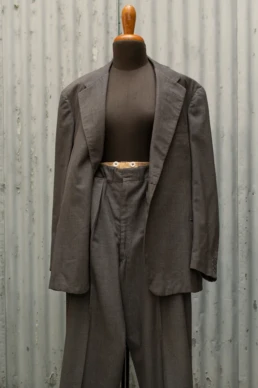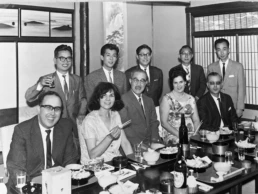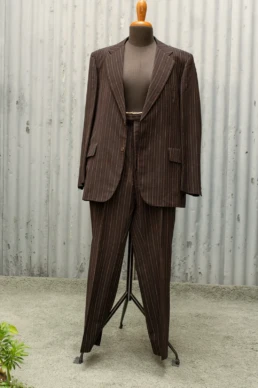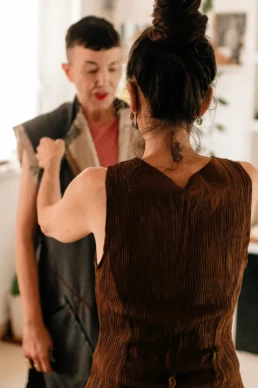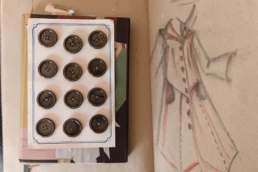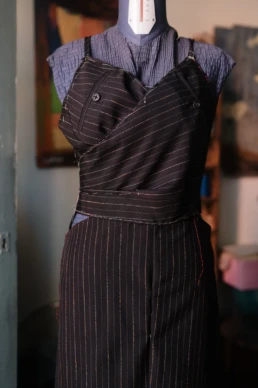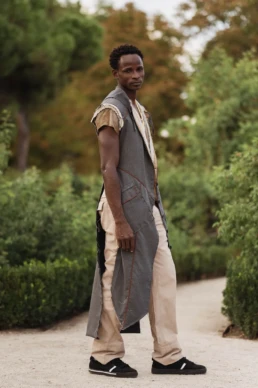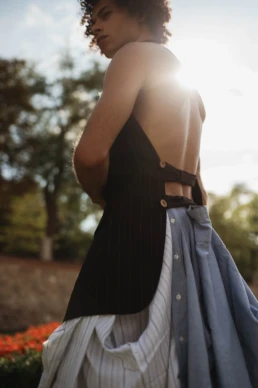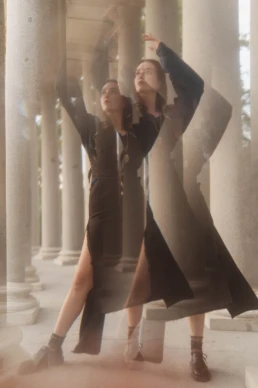What are memories to you?
Memories give me a feeling that I like.
What is your connection to this dress?
The two suits I brought have a special meaning because they were of my father, whom I adored, from two different times in his life, one when he was really happy, enthusiastic, young, and the other probably tired and disappointed.
I would like to dress something that is him in its entirety.
A family dress in the closet what does it convey to you?
Many things, depending on which dress, it brings back memories I have of that occasion and the people who were there at that time that I don’t always remember every day because of my busy daily life. It brings me back to a time and place that I give importance to.
Can you tell us something about the person to whom it belonged?
My father was from the Canaries Islands, he came from a small town and was involved in import-export with the United Kingdom. He started by accompanying a cargo of potatoes and bananas and realizing the potential, he began to create a company that was successful and grew until he reached Japan. He was an entrepreneur and completely dyslexic. Coming from a small town, he was the first man from Spain to join Lloyds. He was a great man, but few people know him, so I would like to pay tribute to him like this.
Re / design
Creating for a person means all this,
interpreting based on the detail brought
out by personality.
With the first garment I designed a coat with decisive cuts highlighting sartorial details usually hidden, following an inspiration dictated by Lupe’s personality, her insatiable curiosity, a lover of sustainable fashion and a traveller.
The original garment was a classic men’s suit, a two-piece (jacket and trousers), wrapped in baggage of emotions and memories linked to the figure of her father.
The deconstruction was slow in order not to damage any part. Once disassembled, I decided to analyse and reuse each piece to create the new design, a careful study of the pattern to insert the cuts in the right places.
Tailoring takes time, knowledge and experience, applying it to design opens up endless opportunities for interpretation.
I looked for new, but vintage, buttons to replace the previous ones.
To complete the current line with a colour combined with the detail, profiling the cuts, I used cotton ribbon, also vintage (1960s).
A study of Re-design carried out to have the least impact on the environment, reusing and reawakening dormant materials still eager to tread a path.
The second garment was also a men’s two-piece from a more recent English era, in a dark colour.
For this I was asked to draw freely.
As with the previous one, I disassembled the suit part by part, analysing some damaged parts and then reconstructing them,
in this case I created a dress with asymmetrical lines, feminine and grunge.
The cuts are designed to emphasise the silhouette, the steps go from the design to the preparation of the model, to the elaboration of the garment basted for the first fitting to fit perfectly.
And a second piece, a vest-top with lacing on the back, parts of the internal structure becoming external.
The versatility of this piece allows it to be used in various combinations of looks.
What are your expectations of the transformation we could give this dress?
I would like something long, something that I could wear as a coat, often, I like the idea of it being tailored. I know Valeria’s work and I know that she uses a lot of contrasting fabrics that I really love, like the idea of something soft on the inside as opposed to the stiffness of the outer structure, but I know, she does it very well!
And what are your hopes for the future path of the dress over time?
I have items from my father’s wardrobe that I can’t throw away, but this is an example, especially this dress, I see it being passed down in my family because it will be a marriage of history and design.
If my children keep anything, they will keep this because it will have everything, along with the photographs.
Then to set an example to others on what can be done.
I believe this dress will be passed down to my daughter or son or grandchildren, to remember their great-grandfather and grandmother.
It’s like a book, people will be able to say, look this was from this time and then this other time, and this is now from my time.
